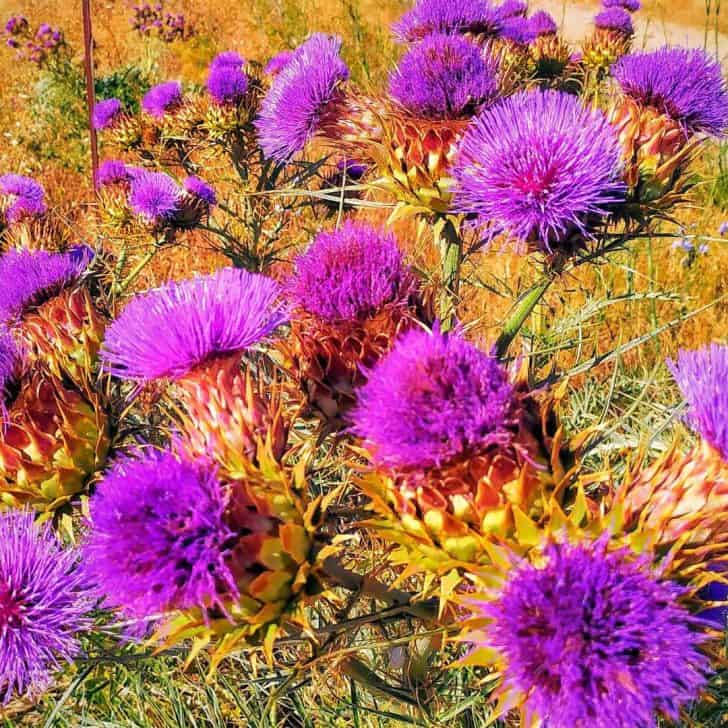As medicinal gardening becomes more popular and people are turning to plants for their healing powers, there are many plants to choose from to create a healing medicinal garden. As California explodes with color after an epic rainy season, a few flowers are stealing the spotlight, but there are some that you may not have noticed before which happen to have health benefits.
Here are ten of the most powerful medicinal garden plants you can find in your wild Californian backyard.
Easy to gather and forage, and a much cheaper alternative to buying the same medicinal herb in bottle or powder form, Milk Thistle, Yarrow, California Sagebrush, Yellow Mustard, Fennel, Dandelion, Chamomile, Miner’s Lettuce, Queen Anne’s Lace, and Wild Strawberries are among the holy grails of medicinal garden plants.
Available nearly everywhere you can hike or set foot in California, these precious plants pack a punch when it comes to holistic healing. These florae feature diverse healing powers, and each one can be used for cures, tinctures, teas, poultices, or even bath soaks.
10 Amazing Medicinal Garden Plants
1. Milk Thistle
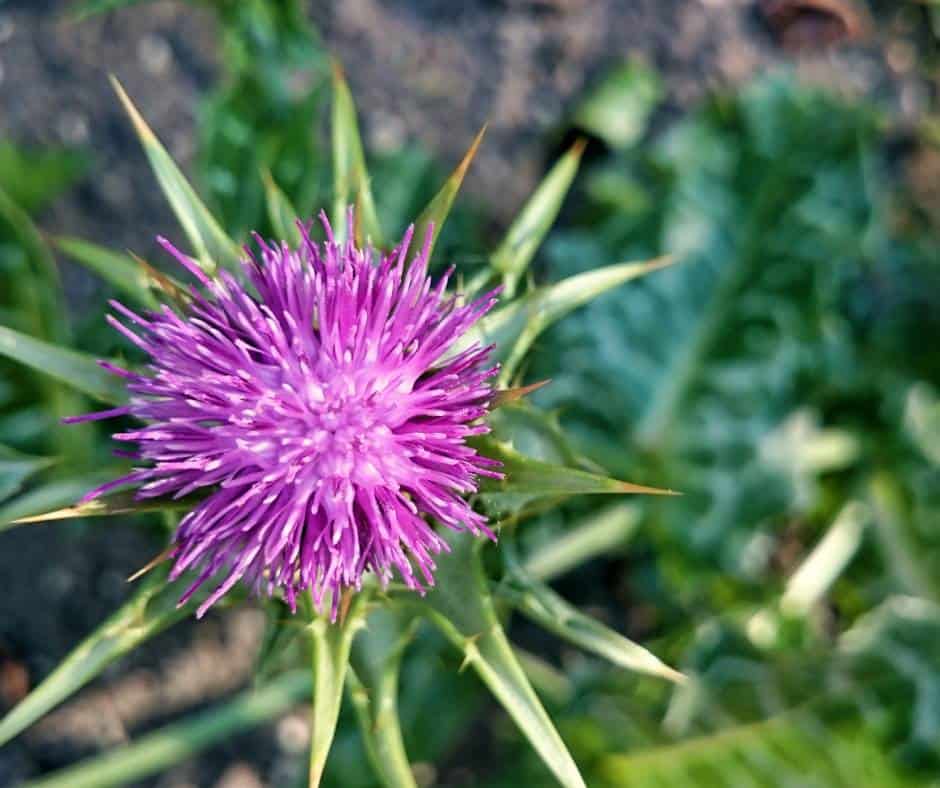
Milk thistle is one of my favorite medicinal plants to forage for use in tinctures and tonics. This prickly, thorned plant with purple flowers is one of the most underrated yet powerful medicinal garden plants known for its excellent ability to heal the liver.
We often overlook it or even avoid it when we see its sharp spikes and formidable spines, yet milk thistle is a medicinal powerhouse and is worth adding to your repertoire of medicinal garden plants.
Healing Properties of Milk Thistle
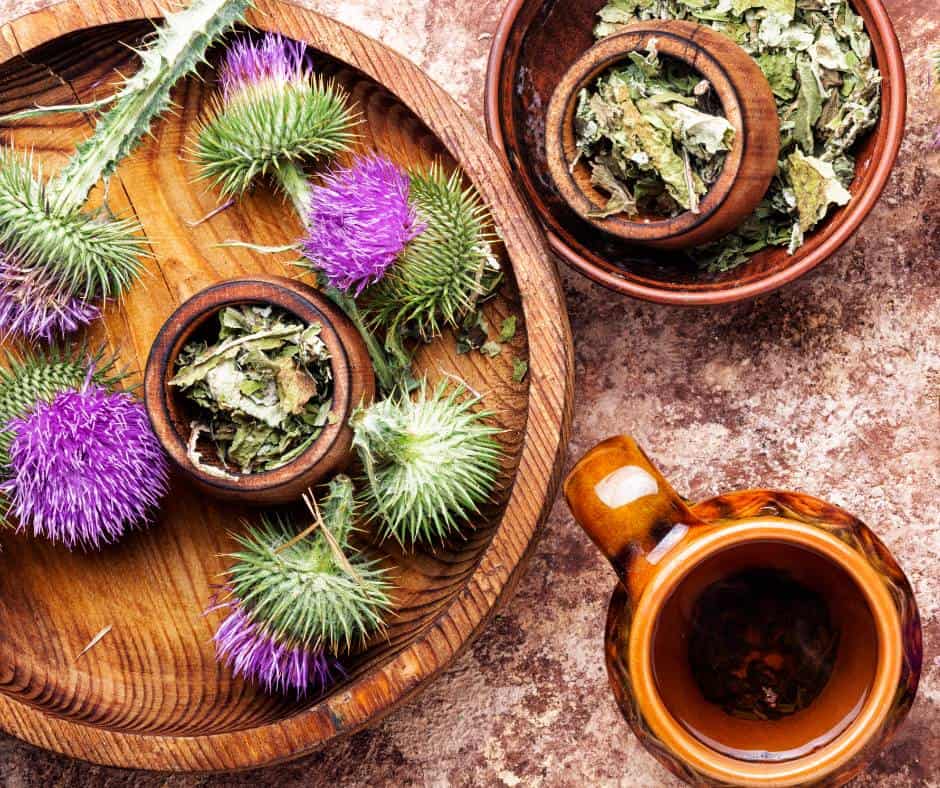
Milk thistle is well known as a powerful liver purifier and detoxifier and is readily available during the spring and summer in Northern California, covering the hillsides with prickly purple flowers. You are more likely to see it in Southern California from spring through early summer. The benefits of milk thistle are numerous, but the secret lies in its seeds.
The seeds contain silymarin, which is a potent liver detoxifier. Each flower on a milk thistle plant contains around 200 seeds, with one plant carrying over 6,000 on average! In addition, milk thistle has anti-inflammatory benefits, which can help with asthma, rheumatoid arthritis, and even cancer.
How to Create a Milk Thistle Tincture
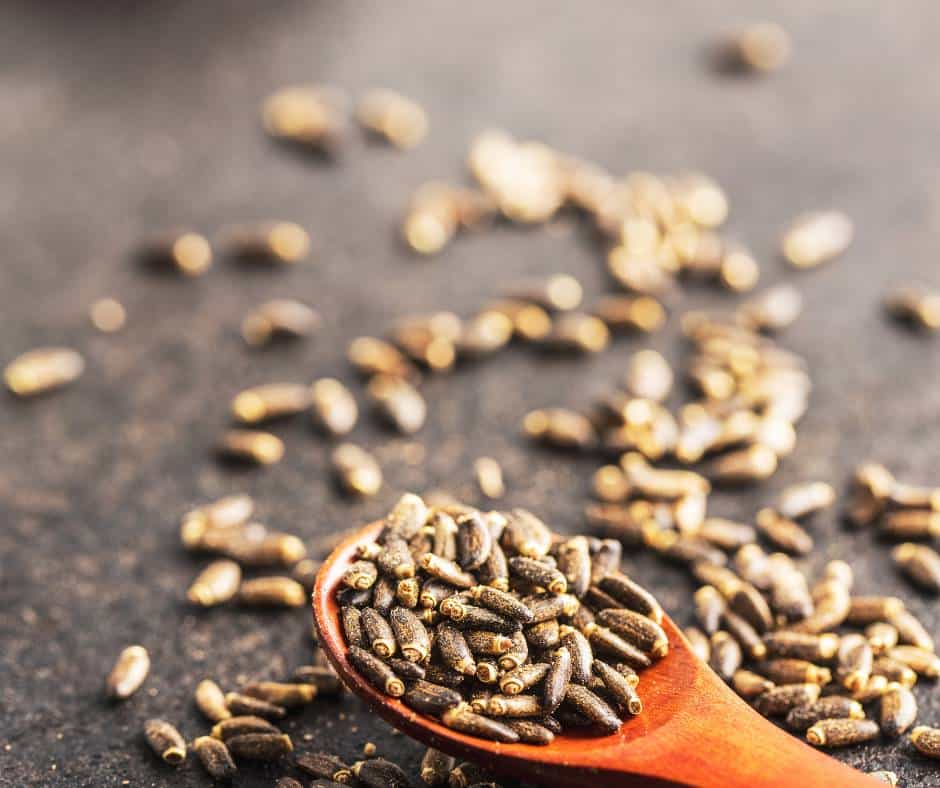
An easy tincture can be made using a ratio of five parts seeds, one part water, and one part 80-100 proof alcohol.
Here’s a recipe I use to make milk thistle tonic:
Place the pappus (the fluffy dried flower part of the plant) in a mason jar, and cover it with the above liquids. Shake the jar once a day and leave it to sit in a cupboard for 3-5 weeks. When it’s ready, strain the mixture well with cheesecloth or similar and take 1-3 teaspoons daily as a liver cleanse.*
Fun fact: Milk thistle is the national plant of the United Kingdom, but they call it Scotch thistle. Next time you visit the UK, check out their paper money, coins, and postcards to see the image of a thistle stamped all over them!
Here are some of our favorite herbs to grow in our backyard garden.
2. Yarrow

Yarrow is another common flower found in California that contains numerous medicinal qualities. Some of its benefits include the ability to stop bleeding, relieve cramps, reduce fever, and decrease inflammation in the body.
Yarrow is a weedy-looking plant with clusters of tiny white flowers and is easy to forage for and collect. Yarrow is easy to harvest and simple to grow in your medicinal plant garden.
Medicinal Uses of Yarrow
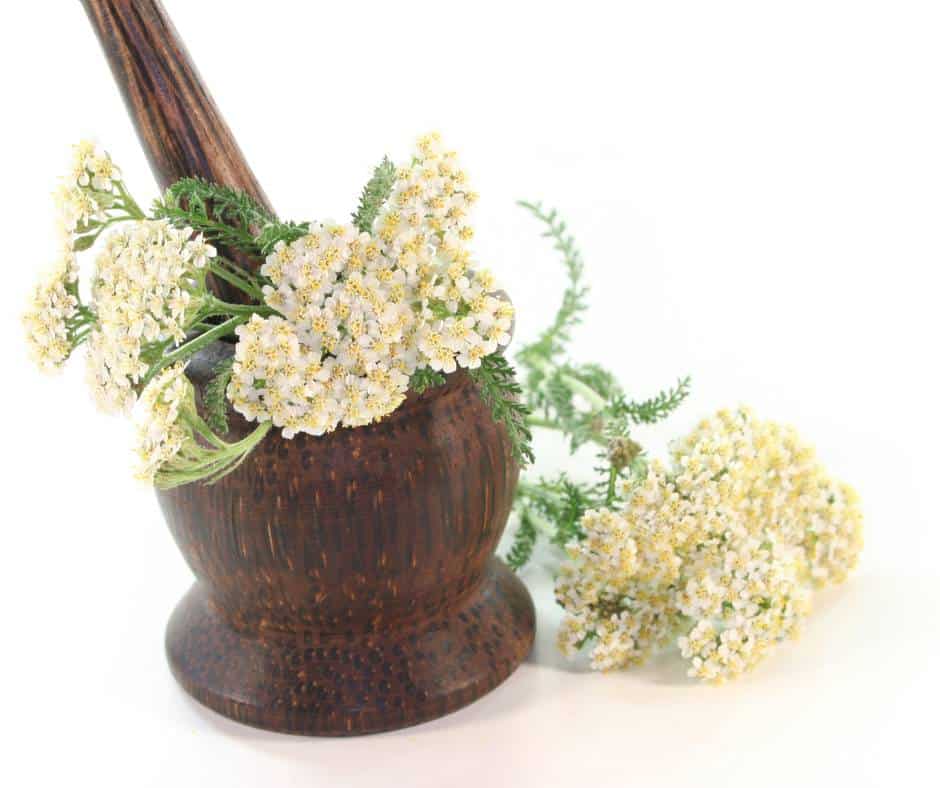
Yarrow contains its own natural antiseptic and is therefore a trusty plant to have on hand. It also has antibacterial properties as well as diuretic, and one can find relief for hemorrhoids and even varicose veins in this pretty little plant.
It is legendary for treating colds and can be made into a poultice for deep cuts and wounds and even connect tissue back together after separating from a cut.
Chew on a bit of yarrow for a toothache or drink some as a tonic daily if you easily bruise. The benefits of yarrow are nearly endless.
Creating a Tonic and Poultice Using Yarrow
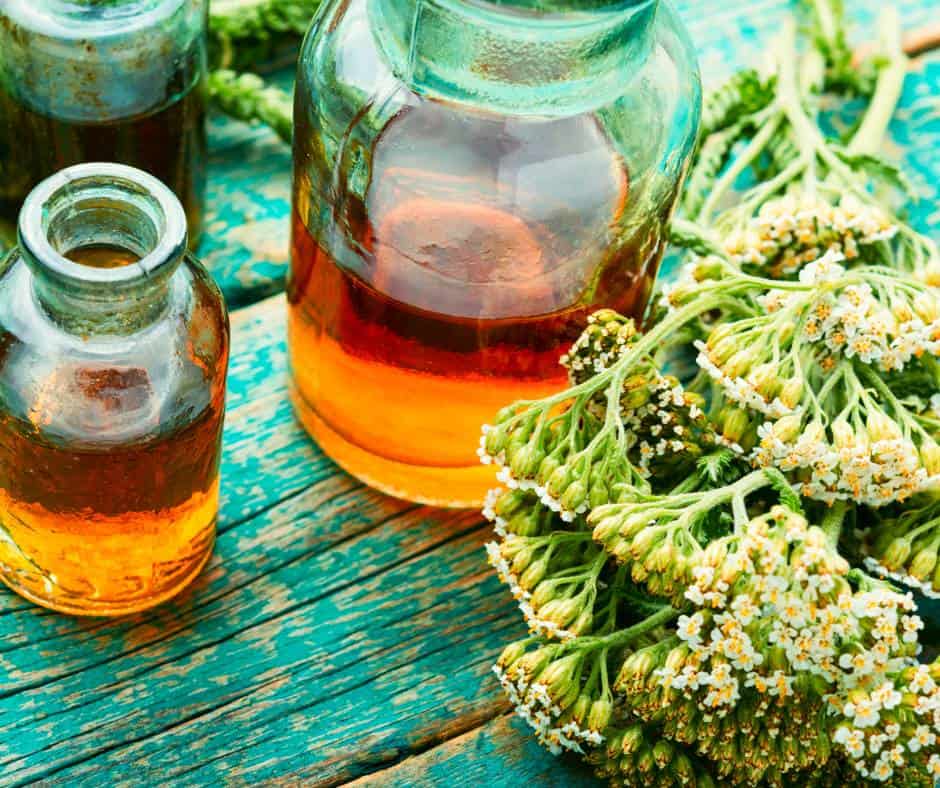
For a simple yarrow tonic, dry the flower by hanging it upside down for a few days away from the sun or moisture. Use a 1:1 ratio of plant matter to liquid (water, alcohol, or a mix of both) and leave in a cupboard for 3-5 weeks to soak.
If the mixture doesn’t seem strong enough when it’s ready, throw in a handful of dried yarrow to liven it up. You can add honey to the mixture for added benefits. Take 1-3 teaspoons a day for holistic healing.
You can also create a quick and effective poultice with fresh yarrow. Simply crush, grind, or chop the leaves, add enough water to make a paste, and smear the paste evenly over the wound.
You can hold it in place with a muslin cloth or place a bandaid over it to keep it secure. Leave it on for 15-30 minutes or longer to soak up all the medicinal benefits of this wondrous wild plant.
Did you know? In folklore, yarrow is often called Soldier’s Woundwort, Bloodwort, and Devil’s plaything, and historically was used by soldiers on the battlefield to stop minor wounds from bleeding.
3. California Sagebrush (Wild Sage)
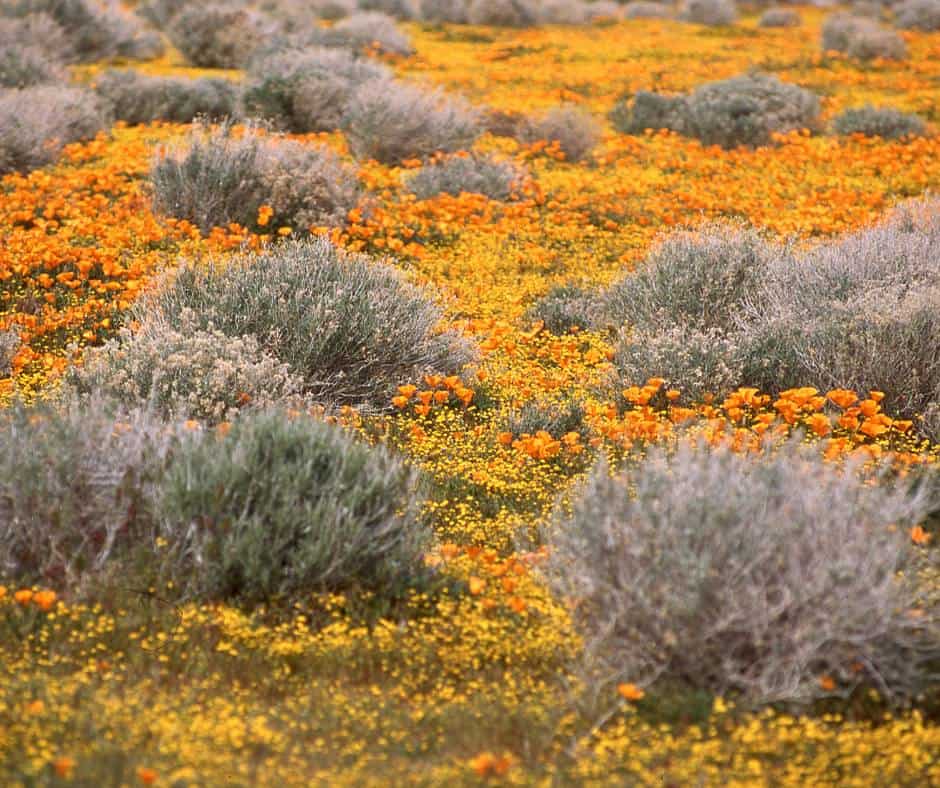
One of my personal favorites in my medicinal garden is California sagebrush. I like to call it wild sage since it is distinctly different from the sage one often used in cooking.
Wild California sagebrush has long, feathery soft shoots with a spicy, herbaceous smell. When I’m out hiking, I will often grab a small handful of sage, crush it together in my palms and rub it all over my body, almost like perfume. The smell is intoxicating, as well are the healing properties.
Medicinal Uses of Sage
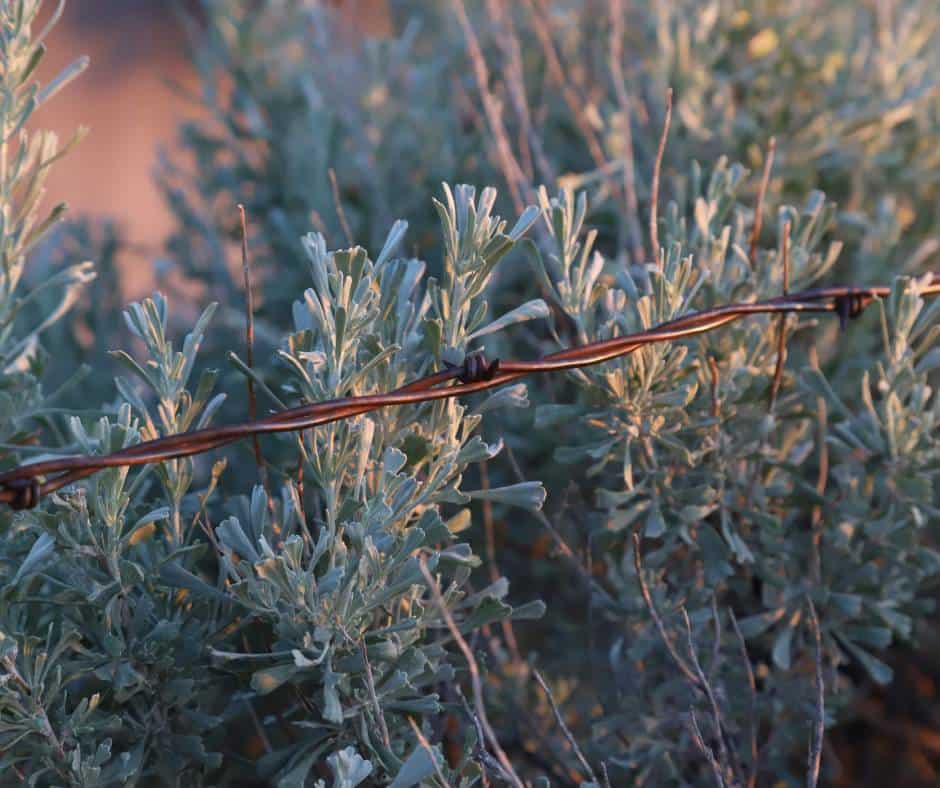
Sagebrush has been used for hundreds of years for its valuable medicinal qualities. Native Americans treasured it as a natural remedy for colds, to heal skin lesions, and to treat hemorrhoids. Notably, they also made it into a tea to help reduce the symptoms of a fever.
It has also been known to help treat rheumatism, asthma, and ease symptoms of menopause and childbirth. As a natural antiseptic, antimicrobial, and antibacterial plant, sagebrush has many practical uses and is superbly multifunctional. It’s another perfect addition to grow in your medicinal plant garden or forage in the hills of California.
How to Make a Sagebrush Herbal Bath Soak

The smell of sagebrush is one of my favorite smells in the wild. It has a spicy, herbal, and almost lemon-like quality and is intoxicating to inhale. I make an herbal bath soak with dried (or fresh!) wild sage and it’s absolutely lovely. Here’s the recipe:
Sagebrush Herbal Bath Soak
1/2 cup pure Epsom salts
1/4 -1/3 cup Himalayan pink salt
Scant 1/4 cup organic apple cider vinegar with the mother culture
1 tablespoon bentonite clay
1/4 cup fresh or dried wild sagebrush, chopped or blended
Draw a hot bath and pour the ingredients under the faucet so they mix well under the water. Enjoy!
Fun fact: This spicy, herbaceous plant is actually not a true sage, but hails from the Sunflower family!
4. Yellow Mustard (Wild Cabbage)

Yellow mustard is next up to bat, and I like this wild medicinal plant because it is simple to forage, grows and thrives pretty much anywhere, and can be eaten raw and added to salads and sautees, which makes it a hardy addition to a garden.
I would consider it the underdog of medicinal garden plants; its cheerful yellow flowers pop up from hills, trails, and even the side of the freeway, yet much of the time it goes unnoticed and is content to stay in the background while other plants take the spotlight. But just like underdogs, you’ll find that yellow mustard has more to it than meets the eye.
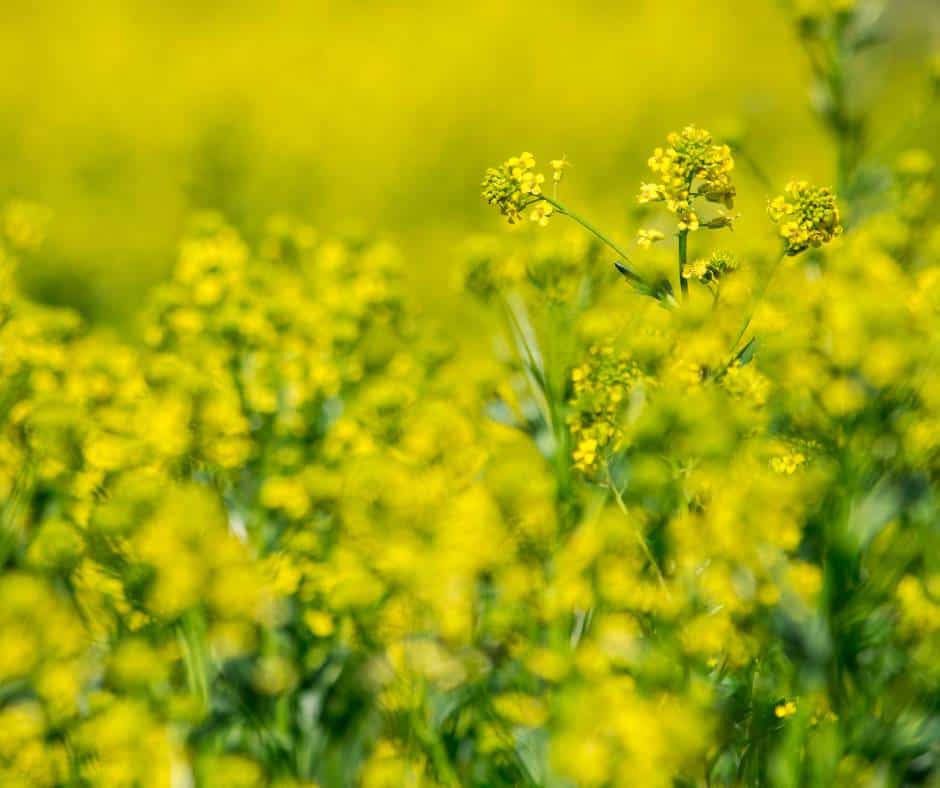
Yellow mustard, or wild cabbage, as it is sometimes called, is actually an invasive species of the brassica (mustard) family. It has a slight horseradish taste and can be added to a myriad of dishes, made into a spicy mustard, eaten raw or cooked, or steamed or sauteed with garlic for a tasty side dish.
Essentially all parts of a yellow mustard plant are edible, contain vitamins and antioxidants, and are nutrient dense like many in the cabbage family.
Foraging for wild yellow mustard is a simple way to add copious amounts of nutrition to your plate – for free!* This little gem is also an excellent plant if you want to attract more bees to your medicinal garden!
To add nutrient-dense greens to your diet, chop up the leaves of yellow mustard and throw it in a pan with garlic for a tasty sautee. You can also dry the flower heads in a dehydrator or by hanging them upside down, and grind them into a powder when they’re fully dried to make mustard or sprinkle them over dishes for a feisty, horseradish-like kick!
Fun fact: The earliest recorded collection of yellow mustard in America was in Boston, Massachusetts, in 1873. It was found in a ship’s ballast that came from England. Yellow mustard often goes by the nickname “Bastard Cabbage” because of its invasive nature, but some of its more polite names include “Wild Turnip,” “Turnip Weed,” or “Wild Cabbage.”
5. Wild Fennel
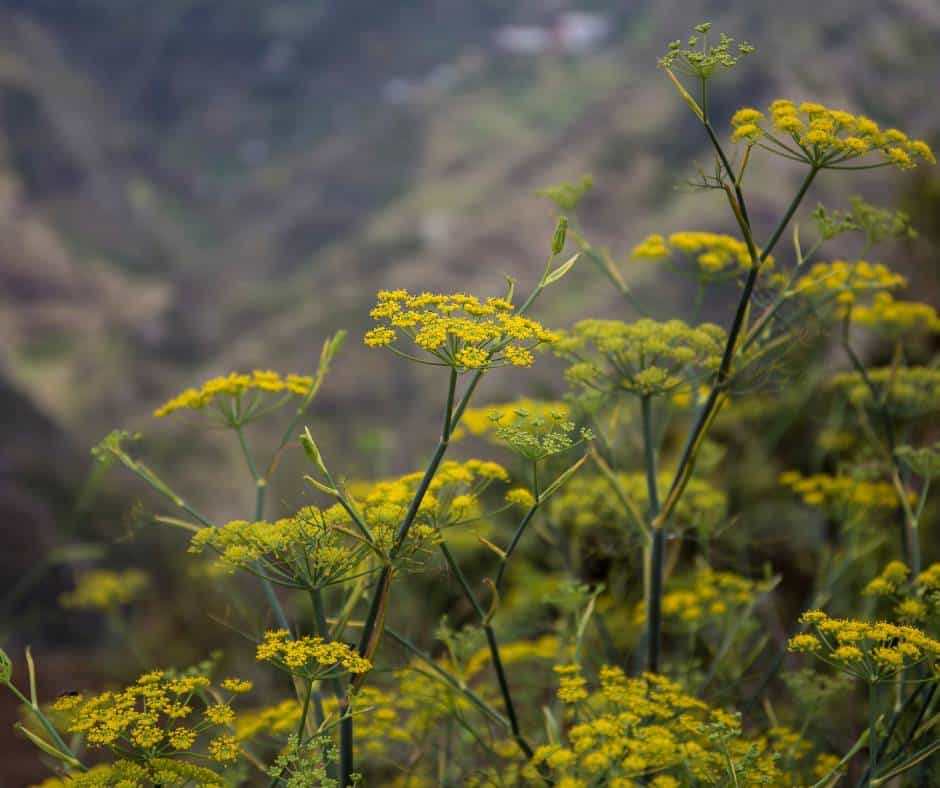
Fennel is another valuable medicinal plant. Known for its mild, sweet licorice taste and smell, fennel grows naturally in California and can commonly be seen sprouting alongside mountain trails near the ocean.
Both the seeds and bulb of this plant are highly nutritious, containing considerable amounts of Vitamin C, Calcium, Iron, Magnesium, Potassium, and Manganese.
Meidcinal Uses of Fennel

In addition, fennel seeds contain anethole, which is an active cancer-fighting compound. Fennel also has antibacterial properties and may reduce inflammation. It can help tremendously with calming gastrointestinal distress and stomach aches and has proven effective for conditions like Irritable Bowel Syndrome.
Fennel is pretty versatile and can be eaten raw or cooked, but not everyone enjoys the taste of black licorice. Personally, I am one of those people. Sometimes if I’m in a pinch and have a stomach ache, gas, cramps, or bloating, I’ll chew on a few fennels seeds to ease nausea.
However, I do enjoy the seeds in my tea, and find that drinking fennel tea also calms my stomach and helps with my digestion. I prefer the sweeter, milder flavor of the seeds mixed with honey and hot water.
Here’s a simple fennel tea recipe I like to keep on hand.*
How to make a Fennel Tea
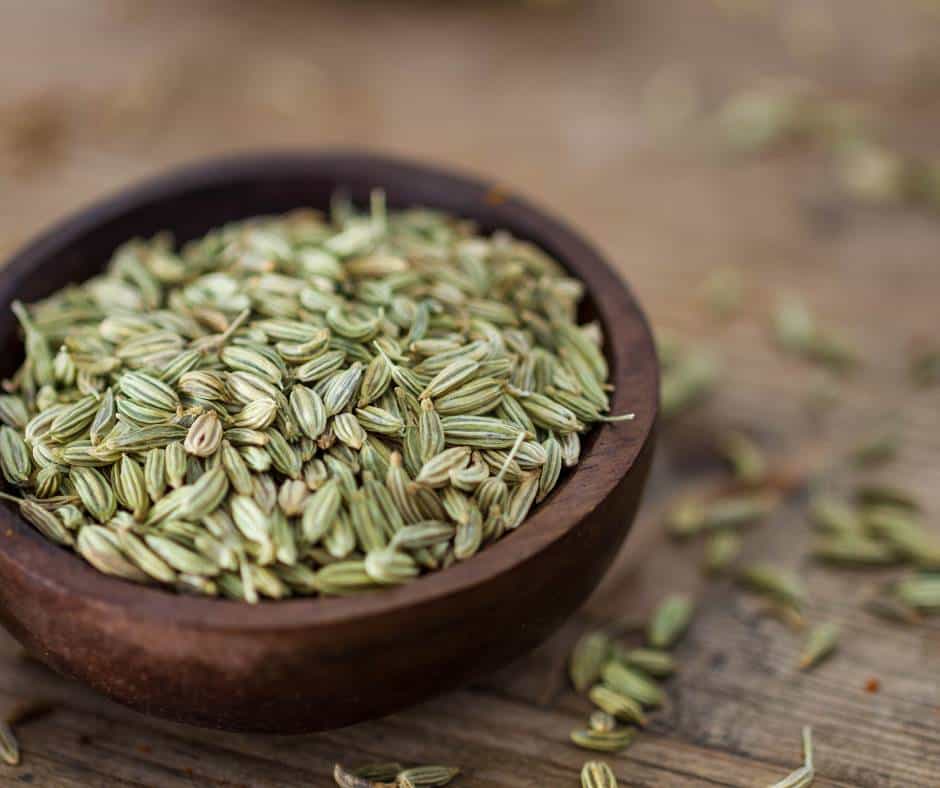
Fennel and Orange Peel Tea
1 teaspoon fennel seeds, crushed or whole, wild foraged and harvested
A few slices of orange peel, fresh or dried
1 teaspoon raw honey
1/8th teaspoon turmeric
Place the fennel seeds and orange peel in a reusable tea sack. Boil water and pour over the sack, adding the turmeric and stirring. When the water has cooled a little, stir in the honey. Raw honey loses much of its nutritional benefits if heated, so I wait a few minutes for my tea to cool down before adding it.
6. Dandelion

Dandelion is a little yellow-flowered weed that is common in California. The botanical name for dandelion is Taraxime officinale – interestingly, the word, “taraxime” comes from the Greek word, “taraxos,” which means both “disorder” and “healing.” The power dandelion holds is even in its name.
Medicinal Uses of Dandelion
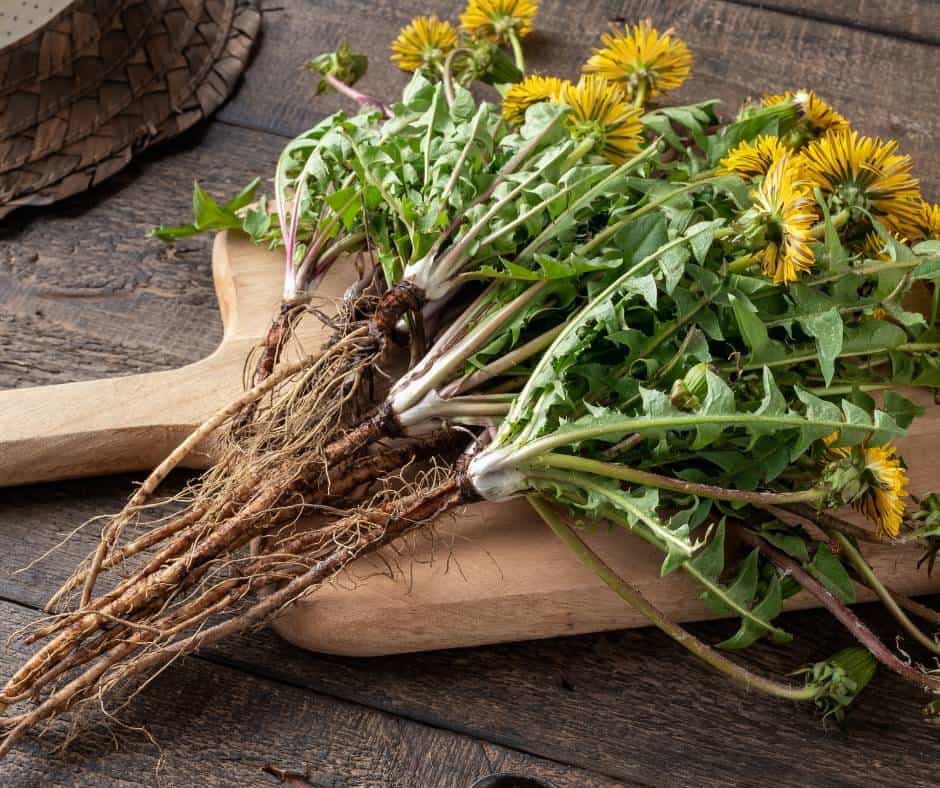
Dandelion is similar to Milk Thistle in that it helps rebuild and cleanse the liver. It has been used traditionally since the 10th century for a host of ailments, including toxicity with the blood, urinary tract dysfunction, lymphatic system problems, and kidney issues.
It is also well known for its efficacy as a diuretic, laxative, stomachic, anti-carcinogenic, and anti-inflammatory herb. This precious little plant contains a host of health benefits.
A simple tea can be made from fresh or dried dandelion, using all its parts, including the root.
Easy Dandelion Tea

Find a selection of wild dandelions, away from lawns, roads, or anywhere that may have been sprayed with pesticides. Pull up the whole plant from the ground, including the root.
Boil the roots for 15-20 minutes. Chop the flower, leaves, and stem, add the roots, and steep for 10 minutes, covered. Add raw honey to taste.
You can also lightly and quickly roast dandelion for a stronger, more bitter, and coffee-like taste.
Fun fact: Every part of a dandelion is 100% edible and a cup of raw dandelion contains 112% of the daily requirement for vitamin A!
7. Chamomile
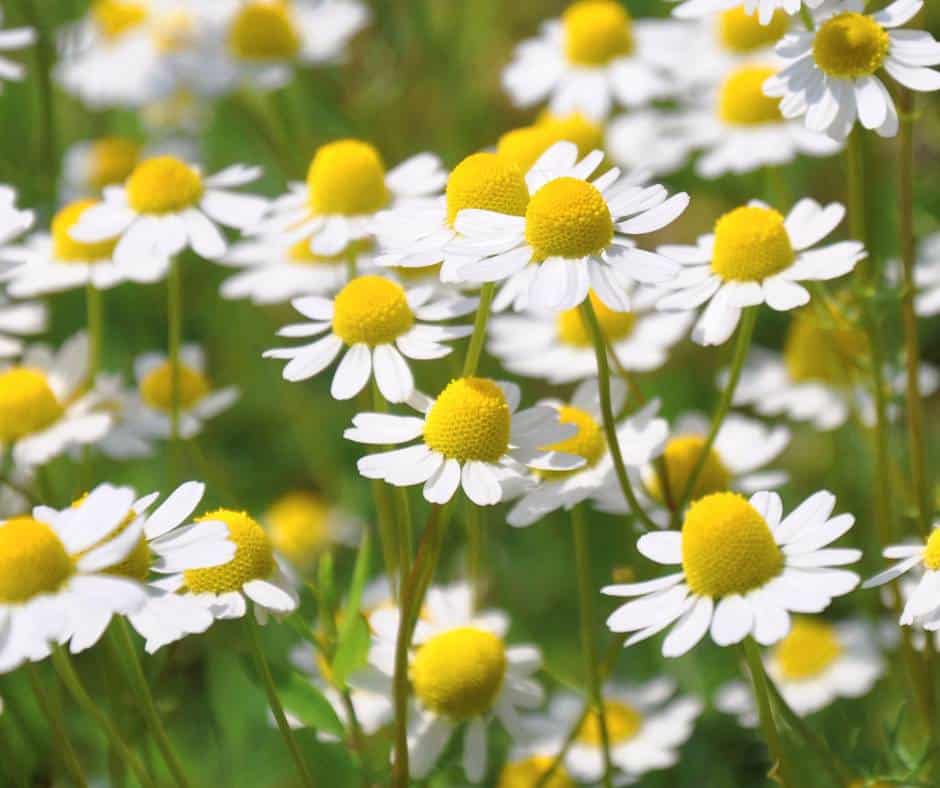
Chamomile is a personal favorite of mine – a perfect little flower with bright, innocent white and yellow flowers covering meadows in the spring.
Chamomile was considered one of the most sacred and important herbs to Native Americans. Chamomile has been used in ancient traditional medicine for over 5,000 years and is a versatile plant with high levels of antioxidants.
This little sweetheart is full of holistic nutrients and has is known to help with inflammatory conditions, insomnia, skin and gastrointestinal disorders, arthritis and rheumatoid pain, and more.
Chamomile is one of my favorite flowers to pick out in the wild and make a pretty bouquet with. I also press this flower to use on cards and bookmarks! Chamomile is both a cheerful and helpful plant to add to a medicinal garden.
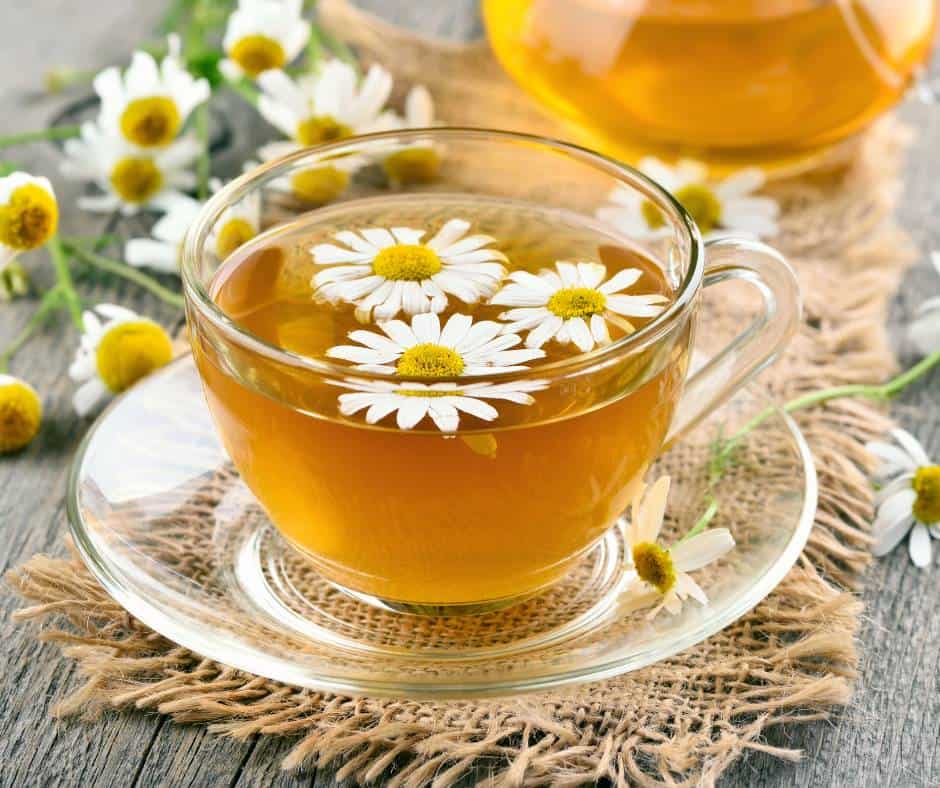
I love this Foraged Tea recipe from winecountrytable.com that’s a beautiful way to use chamomile. I think you will, too!
Fun fact: Chamomile is one of the herbs most written about and documented in ancient medical writings and was a useful medicinal herb in ancient Rome, Greece, and Egypt.
8. Miner’s Lettuce
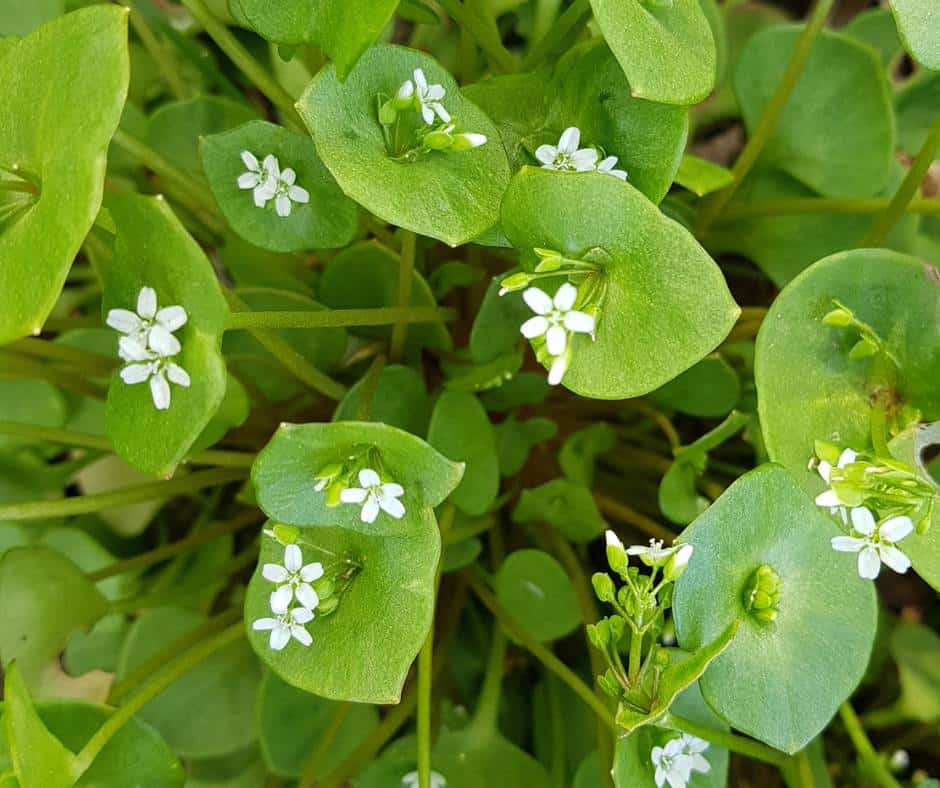
Miner’s Lettuce, also known as Winter Purslane, is a humble plant that often gets overlooked (or stepped on) when it comes to medicinal wild flora. Miners lettuce looks like a mix between a weed and a salad leaf, boasting a single cauline leaf garnished with small white or pink flowers in the center.
It grows wild and free among the grass in California, has a mild flavor, and is often paired with spinach or used for garnishes in a salad.
Medicinal Uses of Miner’s Lettuce
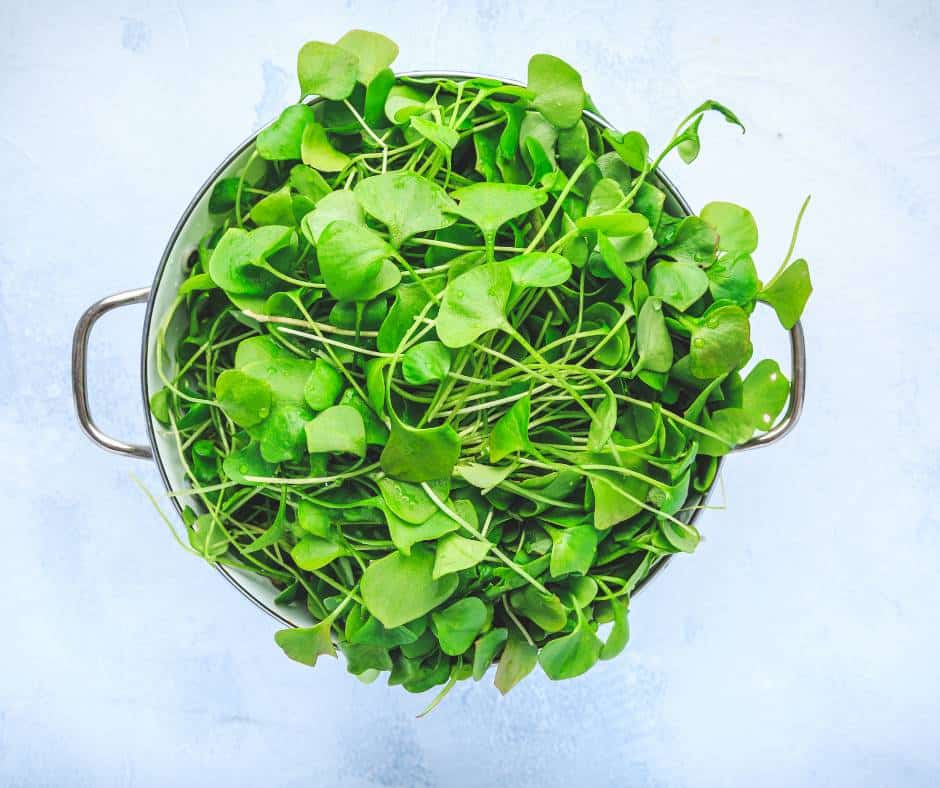
The entire plant, including stem, leaf and blossom, contains high amounts of Vitamin C, calcium, and even protein, and is used as an effective diuretic, poultice for inflamed or rheumatic joints, or as a mild laxative when taken as a tonic.
It can be found in shady coastal spots, forests, and sometimes wetlands. Toss a bit of miner’s lettuce into a mixed green salad to add an understated flair at your next garden party!
I love this recipe from adamantkitchen.com for a pretty winter salad, or you can switch it up and use strawberries and blueberries in the summer!
Fun Fact: Many early North American settlers ate this humble plant as a food staple in the 1800s. During the California Gold Rush, it was used to treat scurvy, hence giving it the name Miner’s Lettuce.
9. Queen Anne’s Lace
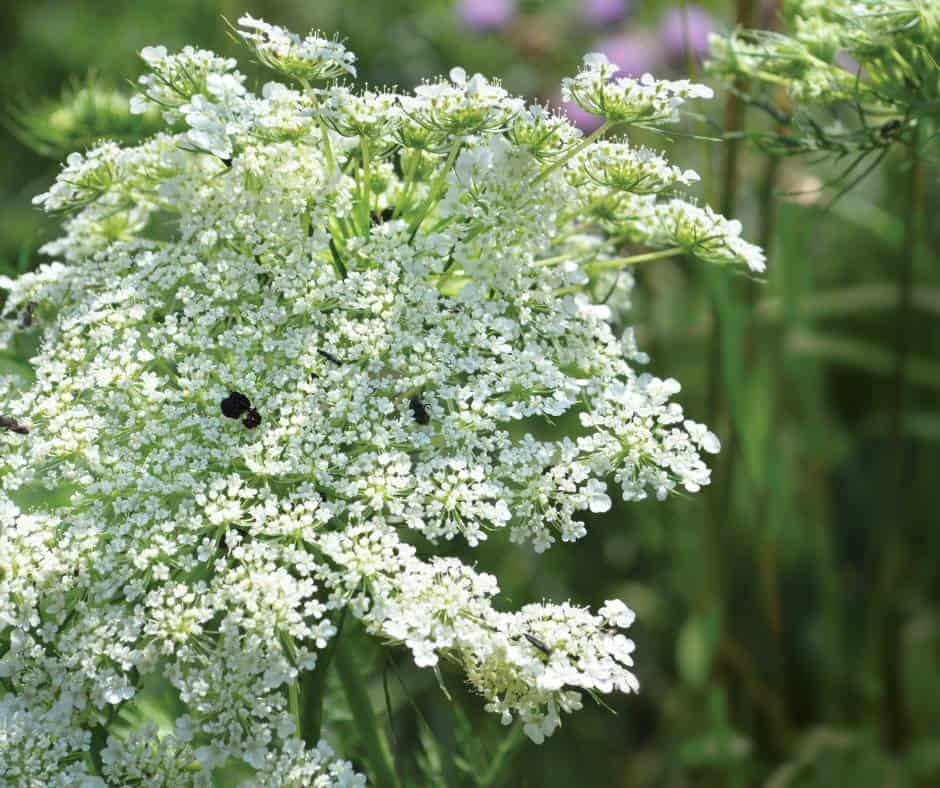
Queen Anne’s Lace is a delicate white flora that boasts thousands of tiny white umbels of flowers and blossoms in the spring and summer. This plant actually belongs to the carrot family and is also commonly called Wild Carrot.
Queen Anne’s Lace was highly prized and cultivated by early Europeans and is still found today in both Europe and America. The leaves can be applied to sores or ulcers in a poultice and can be used as a mild diuretic. The flower is sweet when eaten, and it can be soaked in water or alcohol and used as a perfume for aromatic purposes.
Herbal Decoction Using Queen Anne’s Lace
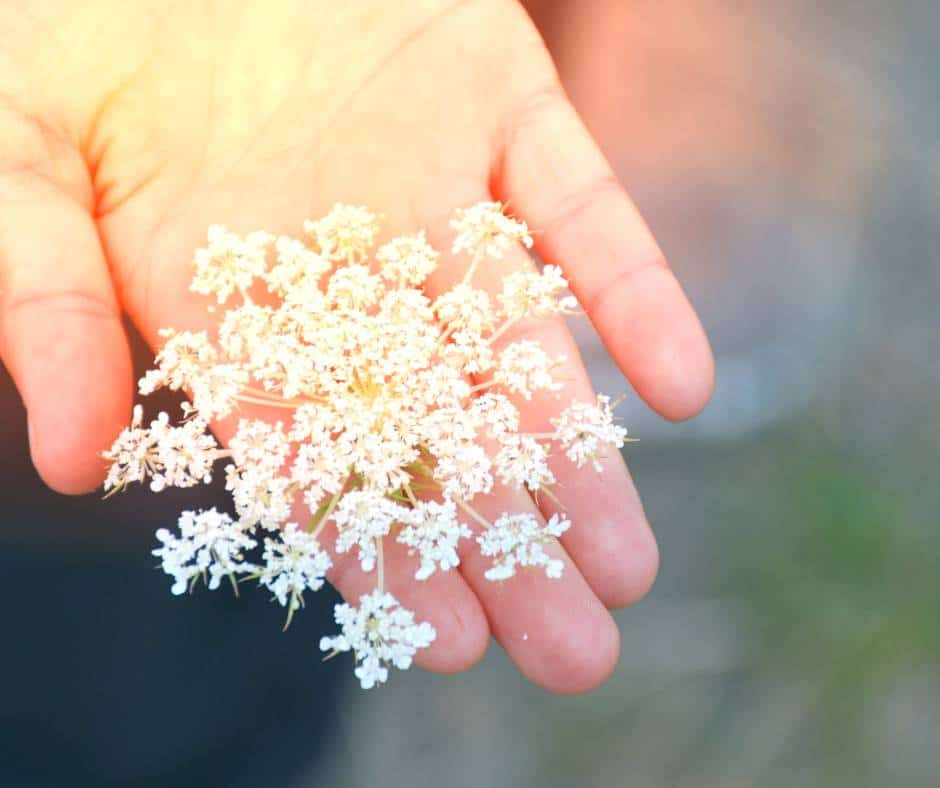
This beautiful plant stimulates the kidneys and reduces inflammation. It can be made into a simple herbal infusion, using one cup of Queen Anne’s Lace to four cups of boiled water. I love learning about herbal decoctions from The Herbal Academy here; they are a wealth of knowledge.
Did you know? Legend has it that Queen Anne’s lace earned its name when Queen Anne of England pricked her finger while sewing lace, drawing a single drop of blood.
10. Wild Strawberries
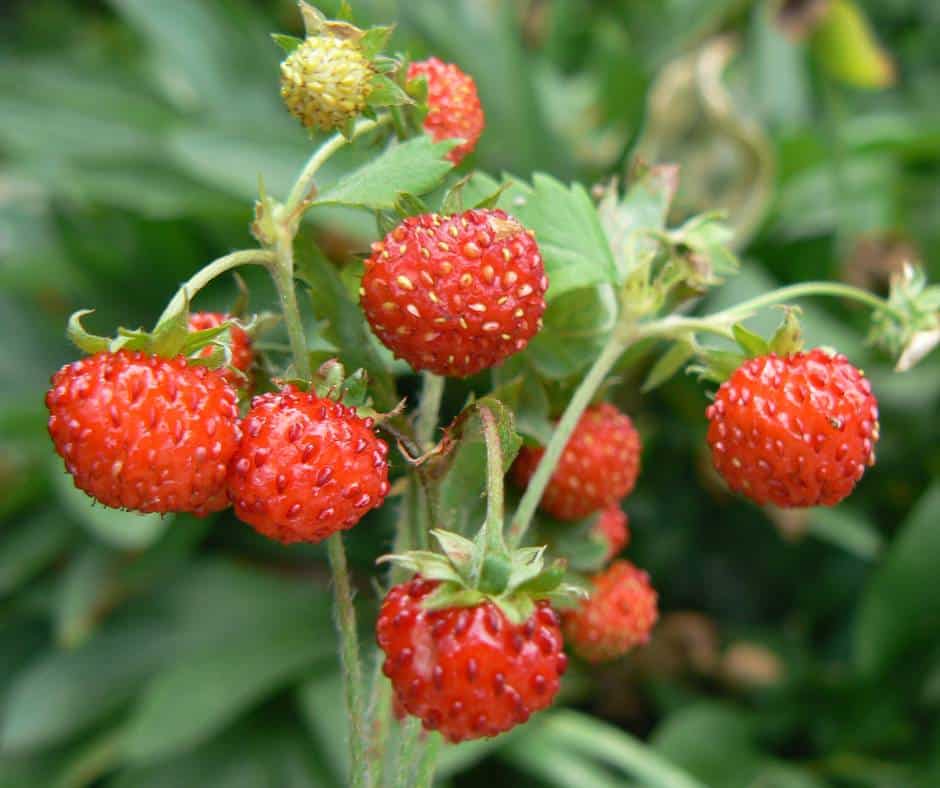
Wild strawberries grow freely where I live in the Pacific Northwest. In the summer, hidden under friendly green foliage and usually rooted in soft, sandy soil, one can find clusters of tiny vivid red strawberries that burst with candy-like flavor. The are most often found in California along the coast, in the coastal ranges, and in the Sierras.
Not only just a joyful treat to stumble upon in the mountains, wild strawberries have many medicinal uses and therapeutic benefits. The leaves contain vitamin C, flavanoids, tannins, and phenolic acid. The berries are useful as a remedy for arthritis, inflammation, gout, and kidney disease.
Combined with other medicinal herbs, the berries and leaves create a blood-purifying tea. Next time you’re lucky enough to happen upon a family of wild strawberries hiding out in the woods, be sure to collect the leaves and roots as well as the berries or take a bit to plant a patch in your medicinal plant garden.
Wild Strawberry Leaf Tea for Sore Throats, Gum Inflammation, and Canker Sores*
Take one teaspoon of dried wild strawberry leaves or 2-3 teaspoons of fresh leaves, cover with eight ounces of boiled water, and steep, covered, for 10-15 minutes. Can be used as a warm gargle for a sore throat.
Did you know? Swedish botanist and physician, Carl Linnaeus (1707-1778), believed he could cure his gout and kidney stones with wild strawberry plants. He used the plant voraciously in various forms and did, in fact, cure himself.
Your Own Medicinal Plant Garden
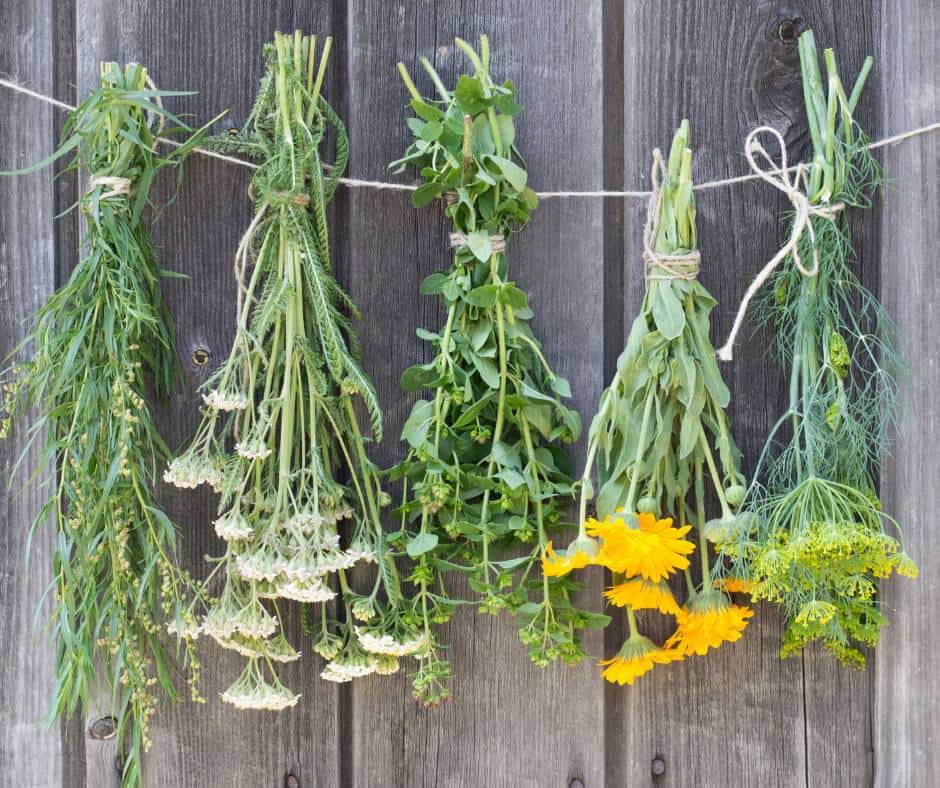
Medicinal plants are a precious gift for holistic healing and wholeness, and luckily for us here in California, we are blessed with an abundance of medicinal flora all around us. Foraging for medicinal plants, or creating your own medicinal garden is simple, easy, cost-effective, and rewarding.
Milk Thistle, Yarrow, California Sagebrush, Yellow Mustard, Fennel, Dandelion, Chamomile, Miner’s Lettuce, Queen Anne’s Lace, and Wild Strawberry are ten potent and effective medicinal plants, used for a plethora of illnesses and issues, but they are just a fraction of what’s out there!
I would encourage you to get started with these and continue adding new medicinal plants to your healing garden as you find them along the way!
*I am not a doctor and these statements have not been approved by the FDA. Some conditions may not bode well with medicinal tonics. Please check with your doctor before you indulge. However, I strongly believe in the power of regenerative and healing herbs and plants, and I make and drink these tonics myself.

